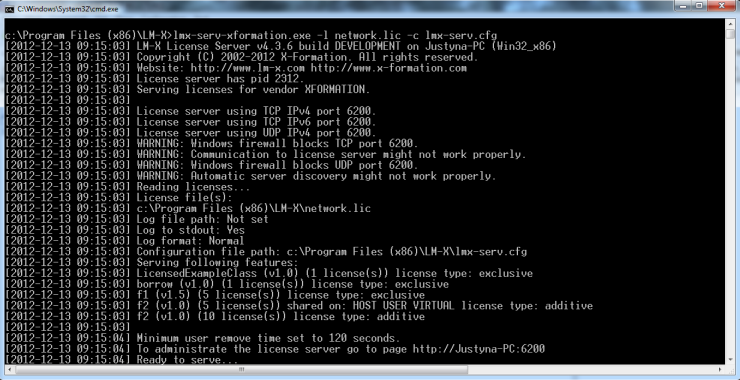| The information on this page refers to v4.4.3 and later, which introduced an installation program that installs both LM-X License Server and the end-user tools and removed some commands from lmx-serv. For applicable to earlier versions, see documentation for previous versions. |
The lmx-serv command will let you run the license server as a service in Windows or as a daemon in the background on Unix. However, it is recommended that you use the provided installer to install and start the license server instead of using lmx-serv.
The lmx-serv command usage is as follows.
For Windows:
Command | Options |
|---|---|
lmx-serv | [-config configfile -licpath licensefile -logfile logfile -port portnumber] |
For Unix:
Command | Options |
|---|---|
lmx-serv | [-background -config configfile -licpath licensefile -logfile logfile -port portnumber] |
Where:
Command |
|
| Description |
|---|---|---|---|
Long version | Short version | Applies to |
|
-background | -b | Unix | Run the license server as a daemon in the background. |
-config | -c | All | Specify an optional path to an lmx-serv.cfg configuration file. Typing the full path is required. If the server is run without the -c parameter, it will use default settings. |
-licpath | -l | All | Specify an optional license file path that will be read in addition to those specified within the lmx-serv.cfg configuration file. |
-logfile | -lf | All | Specify an optional logfile path, which will override any logfile settings in the lmx-serv.cfg configuration file. |
-port | -p | All | Specify an optional port number, which will override the port number set in the configuration file. |
-help | -h | All | Print out usage information for these commands. |
We recommend enclosing all switches (e.g., configuration file path) within double quotes (" ") to avoid problems with white spaces.
The following example shows running the license server on Windows from a command line.
